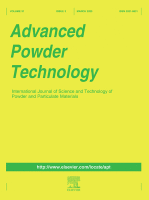 Authors: Maksym DOSTA¹, James D. LITSTER², Stefan HEINRICH¹
Authors: Maksym DOSTA¹, James D. LITSTER², Stefan HEINRICH¹
Affiliations:
¹Institute of Solids Process Engineering and Particle Technology, Hamburg University of Technology, Germany
²Department of Chemical and Biological Engineering, University of Sheffield, England, UK
Reference: Maksym Dosta, James D. Litster, Stefan Heinrich, Flowsheet simulation of solids processes: Current status and future trends, Advanced Powder Technology, Volume 31, Issue 3, 2020, Pages 947-953, ISSN 0921-8831, https://doi.org/10.1016/j.apt.2019.12.015.
Abstract: “Complex manufacturing processes are nowadays applied for production of various solid products. It is very common that for production of particles with desired properties several transformation steps like drying, milling, classification, granulation, etc. should be involved. This leads to the process structures consisting of different apparatuses or transformation substeps connected with material and energy balances. Consequently, development of new processes or optimization of already existing, as well as an optimal control, is a very challenging task, which can be partially solved using numerical modelling…”
Comments: This paper is from the same research organization that, a decade or so ago, started the development of SolidSim, the first steady-state process simulator dedicated to solids processes. SolidSim used CAPE-OPEN as the basis for its architecture. Here the authors review the role of flowsheet simulation for modeling of particulate materials and specify the open fields which can be covered in future research. They state that “the interoperability between different simulation frameworks and the data exchange between them will be critical” to further intensive developments focused on multiscale process treatment. And very much aware of CAPE-OPEN, they mention that it has been integrated into several simulation frameworks. CO-LaN is looking forward to see if DYSSOL, the open-source simulation framework being developed at TUHH, will adopt CAPE-OPEN like SolidSim did.
